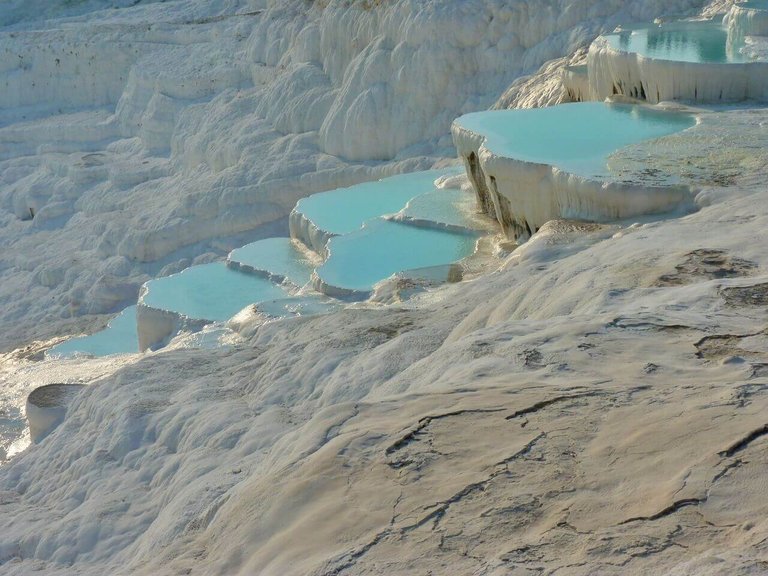
Pamukkale is a stunning geological wonder situated in Denizli in southwestern Turkey that you have to include in your Turkey itinerary. Also known as ancient Hierapolis, Pamukkale (meaning "cotton castle" in Turkish) is famous for the shiny calcite travertines with warm spring pools that contain clean, healing waters full of minerals. If Istanbul mesmerizes you with royal palaces, mosques, museums, Bosphorus cruises, and happening city life, then Pamukkale leaves you speechless with the ancient historical sites and surreal natural beauty on display. In this post, we'll be exploring this popular Turkish destination through a Pamukkale tour.
How To Get To Pamukkale From Istanbul

Before beginning the Pamukkale tour, let's find out how to get to Pamukkale from Istanbul. Following are some of the ways you can get to the "cotton castle" city :
- By flight - You can take a flight from Istanbul to Denizli. The duration of the flight is approximately 1 hour 10 minutes. It's the most convenient way to travel from Istanbul to Pamukkale. From Denizli Airport (DNZ), you can take a shuttle (Dolmus in Turkish) to Pamukkale that departs from the bus station's (Otogar in Turkish) Platform Gate 76 every 20 minutes. If the hotel you've booked here has it's own private pickup, then you can choose that option over the public shuttle.
- By bus - If you prefer travelling from Istanbul to Pamukkale by bus, then you can book your tickets here. Pamukkale is represented as Denizli so do not get confused. Bus travel can take close to 11 hours so plan accordingly. Overnight bus travel is also an option if you want to save money on your hotel stay. You can choose a public shuttle/private pickup service of your hotel to get to Pamukkale once you're at the Denizli Otogar.
- By train - You have the option of enjoying some stunning natural scenery if you choose to travel by train from Istanbul to Pamukkale. The duration of the journey is 12 hours but it's less stressful than travelling by bus. You can check the details of the train travel by clicking here. Book your train tickets for the same by clicking here.
- By car/taxi - It's a 7-hour journey from Istanbul to Pamukkale by car so if you're filthy rich and your wallet's overflowing with Turkish Liras (TL), then hire a taxi. You can also drive your way to Pamukkale if you wish to. A fuel expense of about 650-700 TL should be enough to last you the 570km long drive.
Where To Stay In Pamukkale - Pamukkale Hotels

Following are the accommodations/ hotels in Pamukkale where you can stay:
1. Venus Suite Hotel - Check out the property and book your stay by clicking here.
2. Pamukkale Melrose Viewpoint Suites - Check out the property and book your stay by clicking here.
3. Ozbay Hotel - Check out the property and book your stay by clicking here.
4. White Heaven Suite - Check out the property and book your stay by clicking here.
Pamukkale Tour - Things To Do In Pamukkale
Though Pamukkale is famous for the white travertines, there are other things to do in Pamukkale too. Here's a list of all the places you can explore in your Pamukkale tour :
1. Karahayit Red Springs
The Red Springs are located in a village called Karahayit (6-7 km north of Pamukkale, Denizli). You can take a Dolmus (minibus) or a car from Pamukkale to reach this spot. A bus ticket costs approximately 2 TL per person one way.
Since the white calcite travertines of Pamukkale grab all the attention, this place generally has very few visitors and is less commercialized.
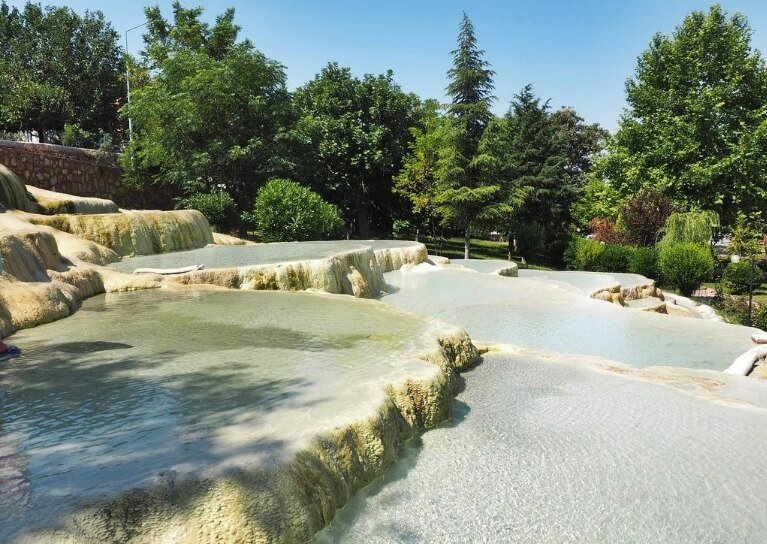
There is no entry fee. You have to remove your footwear to step into the thermal pools. These mini travertines contain hot water rich in iron. It's this iron content along with other minerals that makes the rocks over which the water flows, red in colour.
The ambience is pleasant with lots of greenery all around. You can dip your feet in the pools and enjoy the picturesque scenes around you.
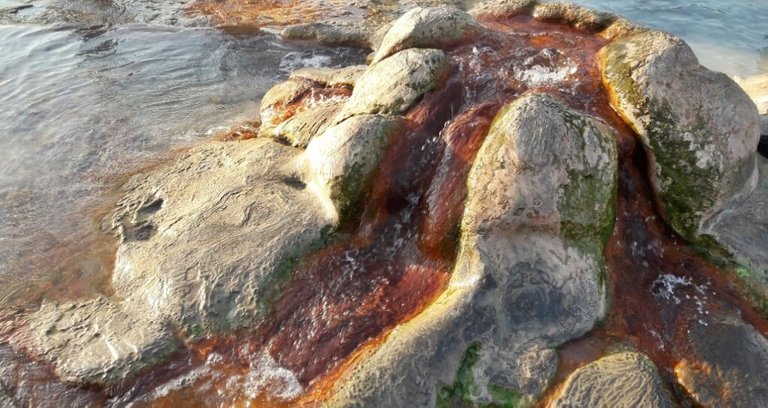
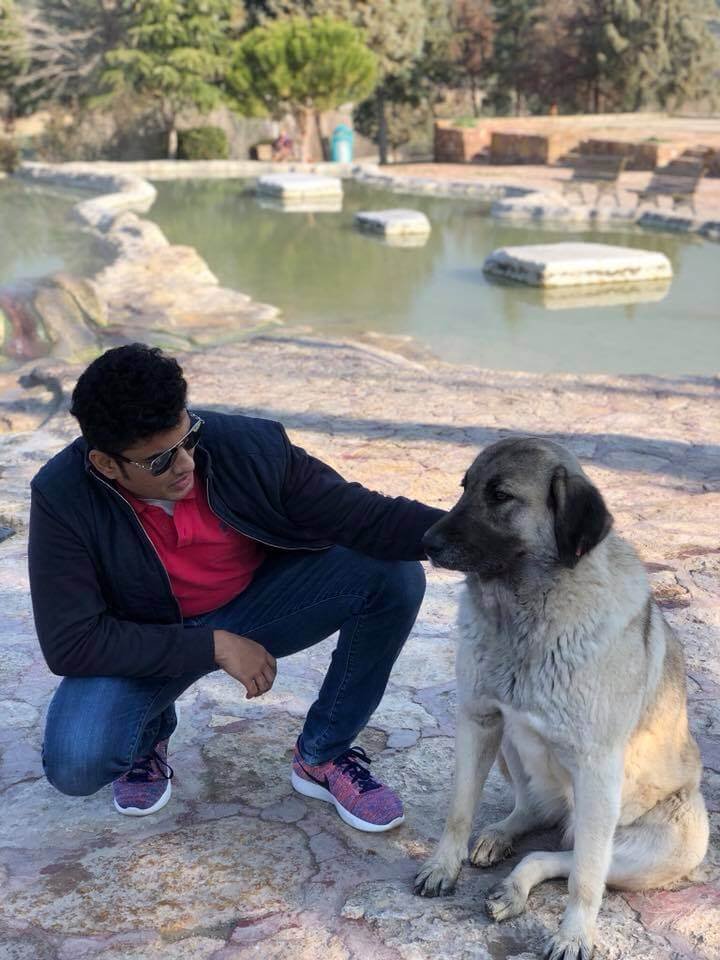
There is this little rocky fountain-like structure in the middle which has iron-rich water emanating from it. You can have a few sips and taste the water as well. From my experience, I can tell you that the water tasted like warm Kinley soda.
If lucky, you might even get to befriend an adorable canine guarding the place.
TIP - You can explore Karahayit village after spending time at the Red Springs. The village is tourist-friendly with inexpensive shops and restaurants. The people are warm and hospitable. You'll get to see and experience life in a village that still retains it's "Turkishness".
2. Ancient City Of Hierapolis And The Archaeology Museum
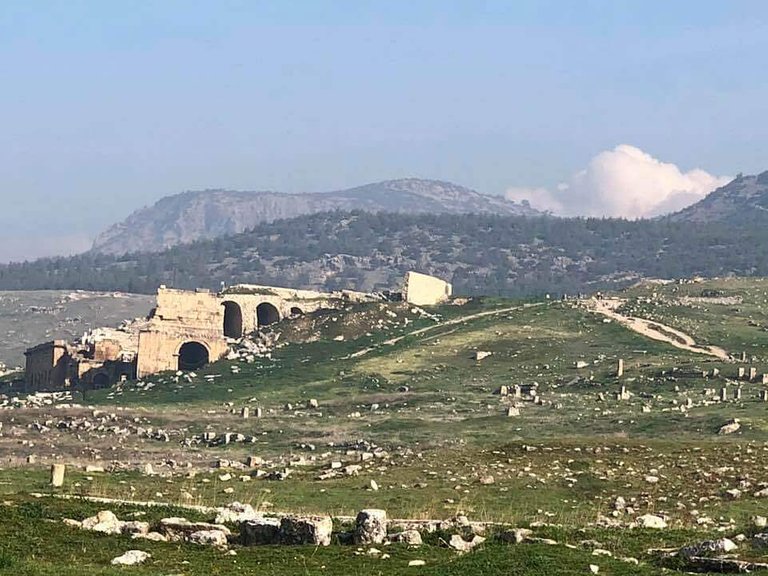
Hierapolis (known as "Holy City" in Greek) was an ancient city located on the Asian side of Turkey in Phrygia. The city was a health resort during Roman times. People came to Hierapolis to cure themselves of diseases since the thermal water here, rich in minerals & iron, was believed to have healing properties.
The city of Hierapolis was founded by Eumenes II, the King of Pergamum, in the 2nd century BC, and it's name was derived from Hiera - the wife of Telephos, the founder of Pergamum.
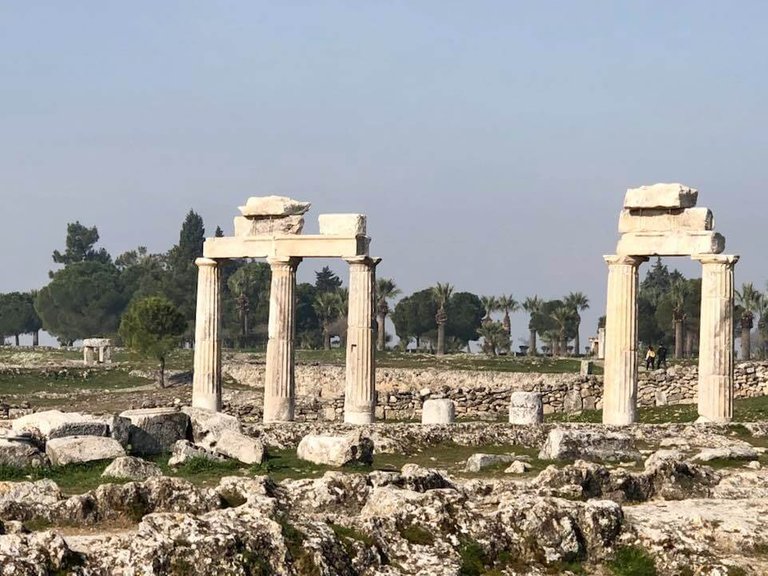
Hierapolis acted as the center for spreading Christianity in Anatolia. What added to it's religious significance was that St. Philip, one of the twelve apostles of Jesus Christ, died here.
The ancient city of Hierapolis is located just 4-5 km away from Pamukkale and you can either take a private taxi or a dolmus to the site. The entrance fee for the site is 50 TL per person. Kids under the age of 6 enter for free while in the age group of 6-12 must pay 13 TL.
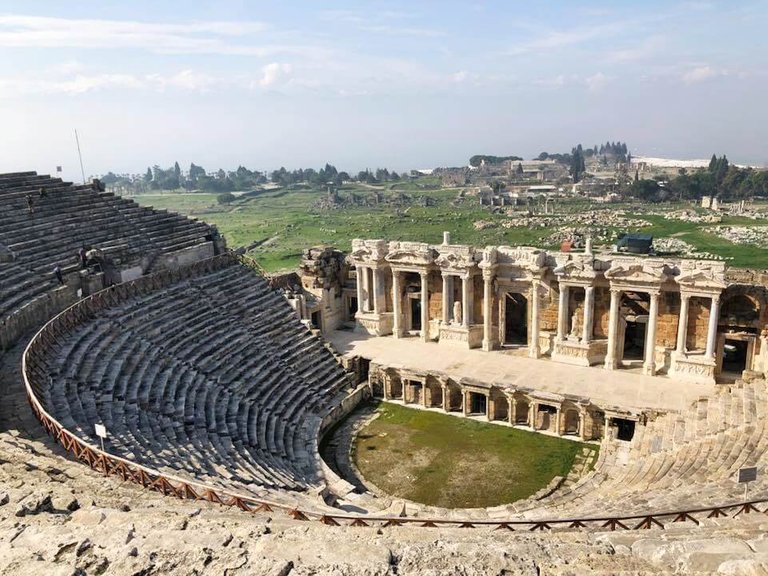
You'll enjoy watching the Greco-Roman ruins that have been well-preserved for tourists to get an idea of what living in the bygone era would have felt like. You'll get to see the Main "column" street and the Gates, Roman baths, Temple of Apollo, Hierapolis Amphitheatre, Hierapolis Necropolis ruins, St. Philip Martyrium, Hierapolis Archaeology Museum & the Antique Pool.
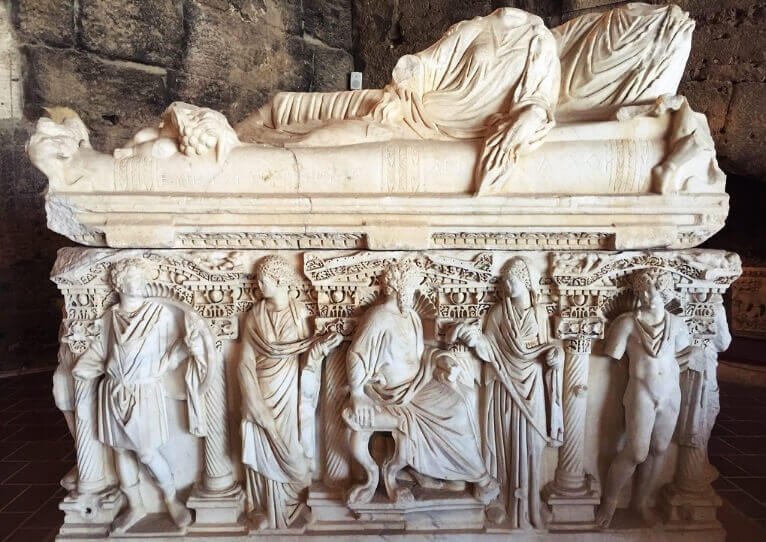
The Archaeology museum, in particular, is worth visiting. Housed in former Roman baths, the museum has works of art from excavations at Hierapolis and findings from Laodicea, Tripolis & Colossae.
The other noteworthy spot is the Antique Pool which is also known as "Cleopatra's Pool". It costs 50 TL per person to swim in this pool where apparently Cleopatra used to swim.
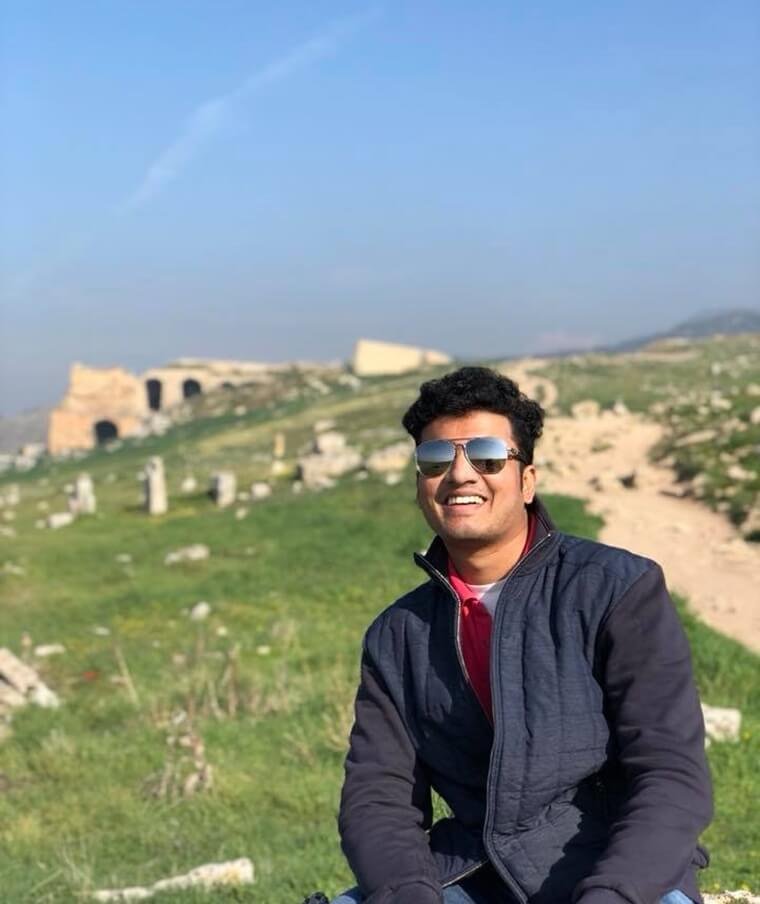
Exploring Hierapolis is a must-do activity according to me, as it gives a wonderful insight into the Greek & Roman history.
3. Travertines and Thermal Pools Of Pamukkale
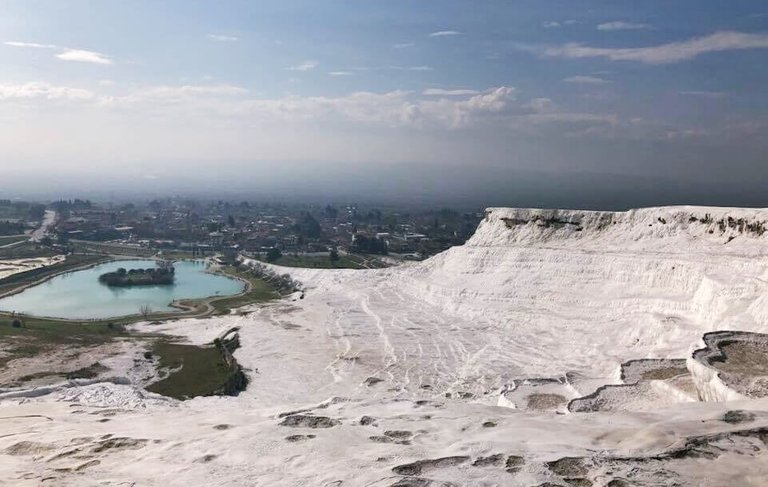
This is the blockbuster sightseeing spot of the Pamukkale tour that attracts thousands of visitors from across the globe.
I remember seeing a picture of these massive snow-like white formations with thermal pools containing turquoise blue waters. And I immediately googled the name of the place since it looked unreal at least from the images and after reading about it, I included it in my travel bucket list. It was "love at first sight" (virtual).
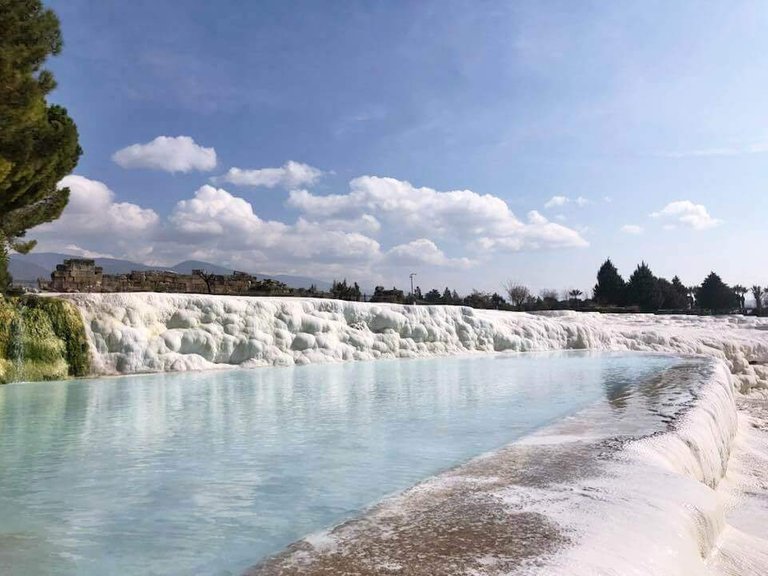
It's only after visiting the place that I learned, that the snow-like white formations were basically limestone deposits made by hot mineral springs called travertines.
The ancient city of Hierapolis infact lies on top of these travertines. Along with Hierapolis, Pamukkale travertines and thermal pools were recognized as a UNESCO World Heritage Site in 1988.
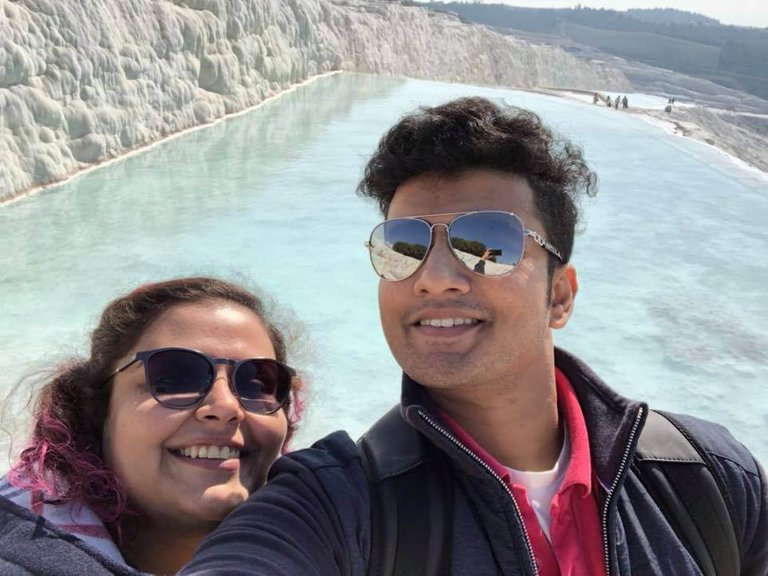
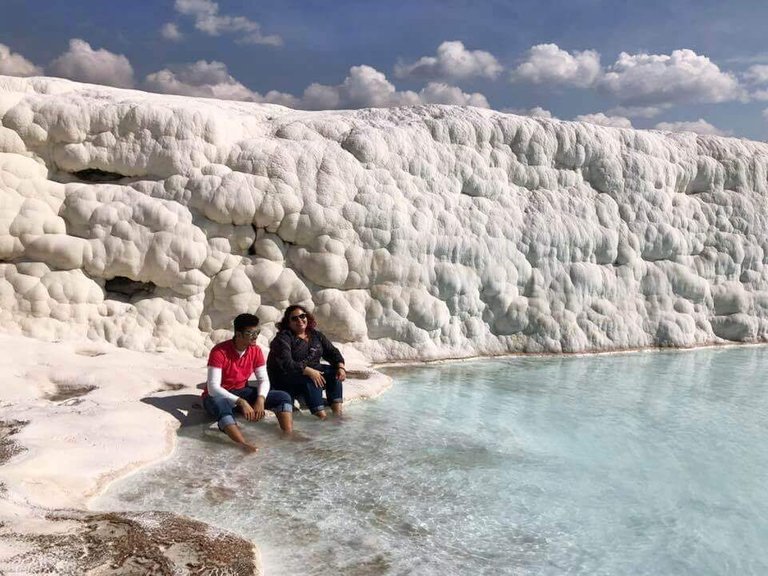
The place actually justifies the tag of being a "cotton castle". The sight of the white travertine terraces with blue waters is paradisiacal and truly breathtaking. I sat in the pool with my travel buddy for an hour, gobsmacked by the sheer magnificence of nature on display.
It almost feels like you're sitting in a cloud bubble filled with water. You have to see it to believe it. The mineral-rich water in the spring pools apparently provides relief from illnesses like asthma, arthritis, anaemia and other digestive problems.

The climb to the top isn't that difficult though it can be a bit tiring for senior citizens and those with weak knees. The entry fee is 50 TL per person and the parking fee is 5 TL in case you park your car at the north or south entrances.
IMPORTANT TIPS :
- Try visiting the thermal pools in the morning so as to avoid crowds and being barefoot in extreme heat.
- Carry an umbrella with you if you're visiting the thermal pools during the afternoon because the dry heat can be biting and can exhaust you.
- Carry drinks with you because they are exorbitantly priced at the little stalls/cafe at the venue.
- Also, bring a separate bag for your footwear because you aren't allowed to step into the thermal pools with them.
- The path to the thermal pools can be slippery so mind your steps and don't be in a hurry to take a dip in these surreal looking pools otherwise you may injure yourself.
4. Pamukkale Natural Park And Mineral Lake
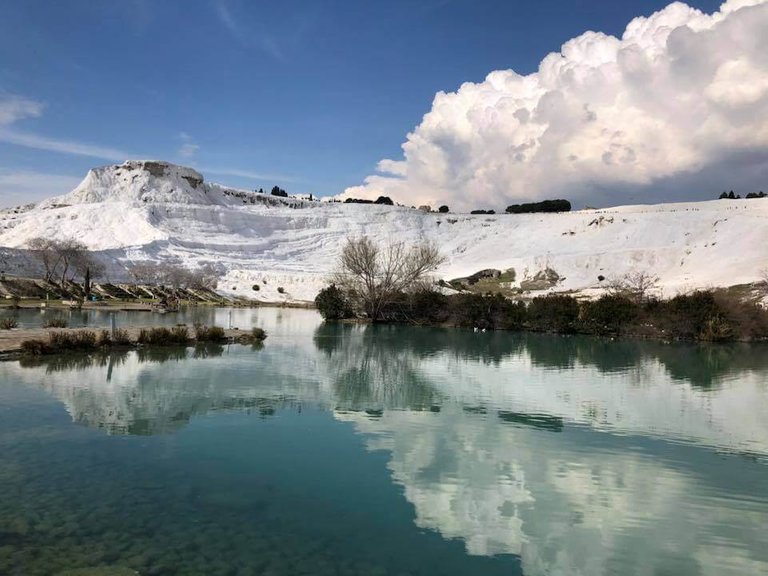
This is a nature park with a mineral lake situated next to the lower entrance to the travertines. The entrance to the park is free. You can easily spend an hour or so walking around the serene lake admiring the huge white calcite travertines in the background.
There are benches around the lake where you can sit back, relax and watch ducklings walk around the park & swim in the turquoise blue lake.
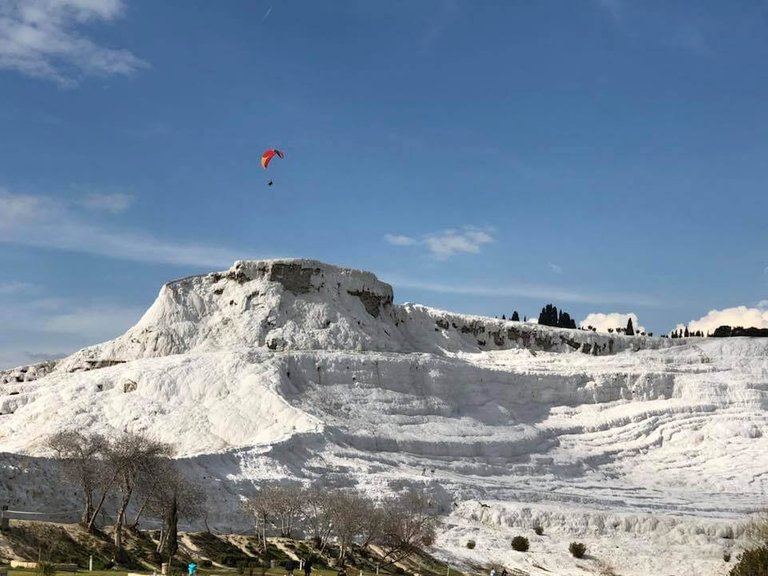
It's a good picnic spot for local families and tourists alike. You may also get to witness people paragliding over the breathtakingly beautiful white travertines. The mineral lake, in particular, is stunning with water so clear that you can see a mirror reflection of the travertines in it. If you're not pressed for time, then you should include this place in your Pamukkale tour.
5. Laodicea
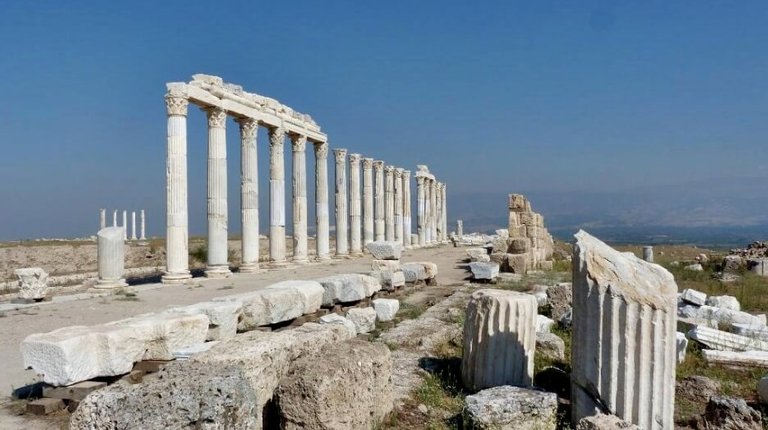
Laodicea is one of the unique archaeological sites that you won't find in the typical Pamukkale tour itinerary as Hierapolis grabs all the limelight. It's an off-the-beaten-path site that I enjoyed exploring.
Laodicea was an ancient Roman city built on the river Lycus. It is located 6 km north of Denizli and can be reached by a private car or dolmus (minibus).
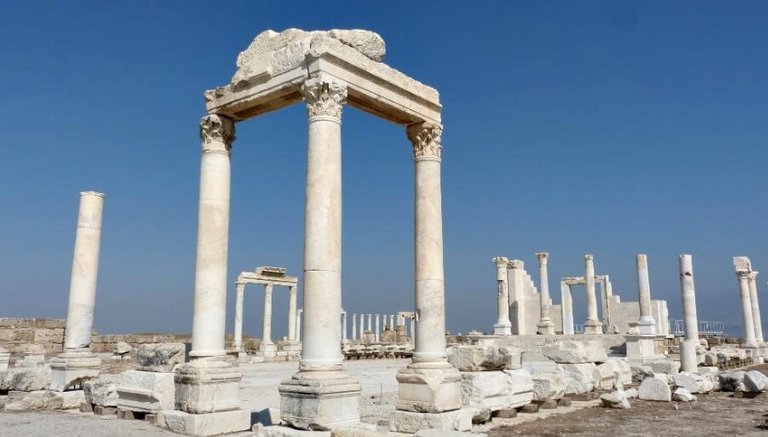
Laodecia is an interesting archaeological site that sits on a windy plateau and provides a good view of the Pamukkale travertines. Entry to the site costs 15 TL and you need to pay this at the entrance which is half a kilometre away from the parking lot.
At the parking lot, there are restrooms & a cute little cafe. An easy walking path guides you to all the monuments in the ruins.
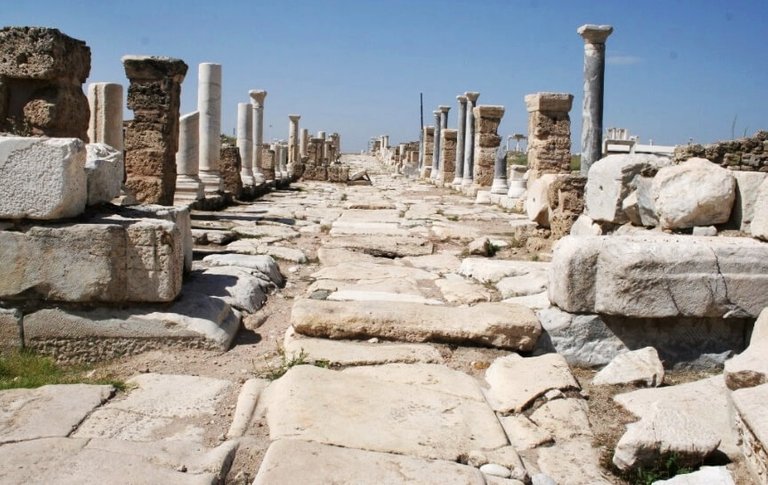
Most of the ruins are still being excavated and you might see archaeologists working side by side as you're exploring the ruins on foot.
There are information boards (in both Turkish & English) located at the entrance and also beside the important monuments explaining how Laodecia became a seat of Christianity, giving you an idea of the lifestyles of people in those times.
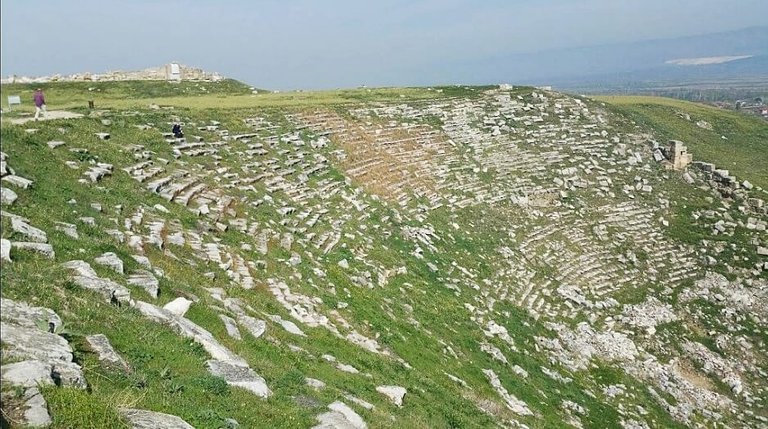
The most significant sites include Roman baths, temples, a humongous stadium, the Agora (which was the main public space in the city), Council House, a gymnasium, an aqueduct, and remains of the famous Church of Laodicea. It is apparently one of the seven churches mentioned in the sacred book "Apocalypses" written by the Apostle St. John.
If Biblical history and less touristy places excite you, then make sure you visit this stunning site between the valleys.
6. Aphrodisias
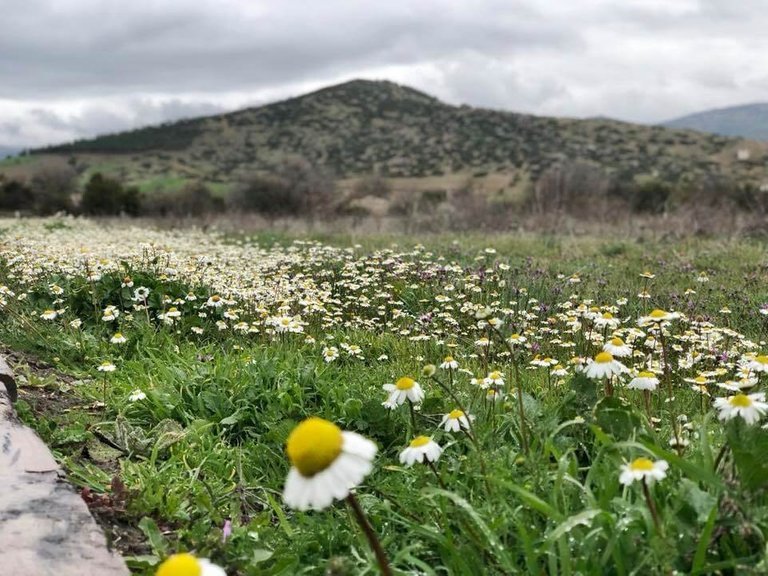
In the end, love is all we need! At least that's what the Turkish archaeologist Kenan Erim must've felt. Because it was his love for history which led him to devote his life towards revealing the magnificent story of Aphrodisias, which is now one of the greatest archaeological sites in Turkey.
Aphrodisias is also called "the ancient city of love" because it was named after Aphrodite, the Greek goddess of love.
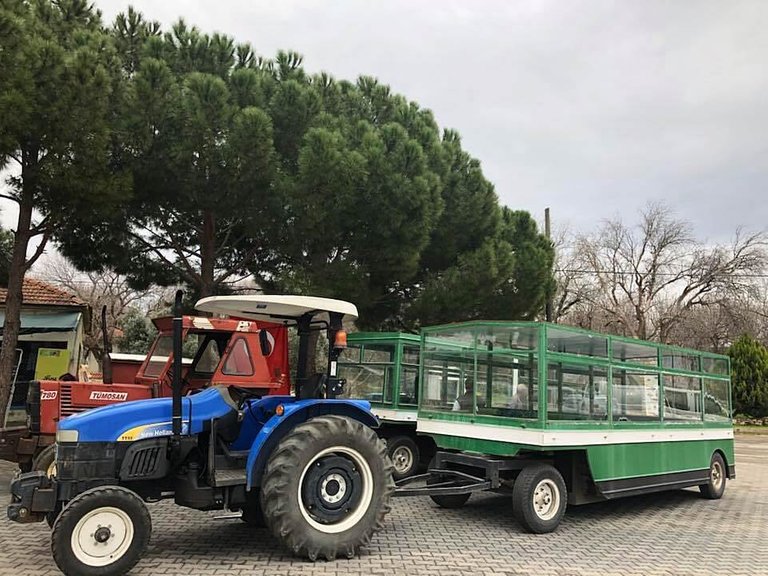
It's located near the Geyre village in the Aydın Province of Turkey - 83 km from Denizli and 98 km from Pamukkale. You can take a private car or a public minibus to the site. The entrance fee to the site is 20 TL which is inclusive of the museum entry. The museum is closed on Mondays so plan accordingly.
Once you've reached the parking, you'll have to sit in a fancy compartment attached to a tractor which will drop you at the site entrance. There are restrooms, a cafe, a gifts & book store beyond the entrance.
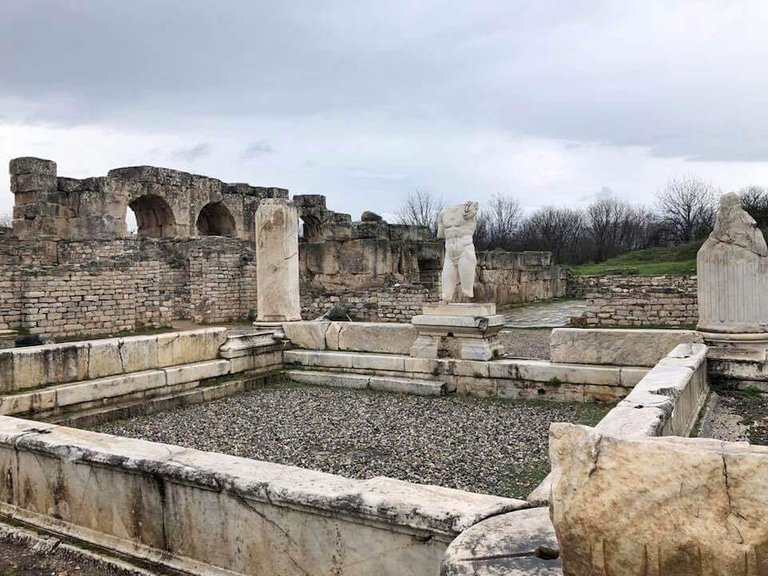
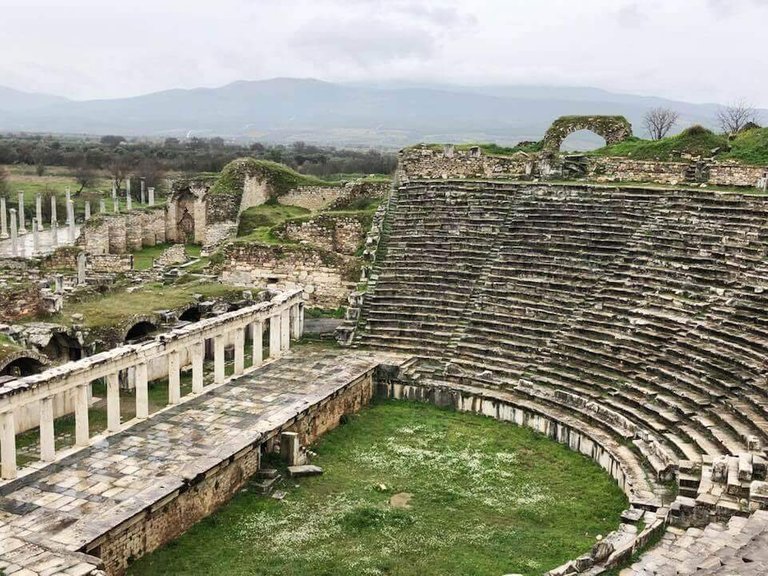
Aphrodisias was a royal Greek city which became a Roman city under the Byzantine empire and was finally abandoned because of the destruction caused by several disastrous earthquakes in the 4th & 7th centuries. It is one of the most well preserved archaeological sites of Turkey and became a UNESCO World Heritage Site in 2017.
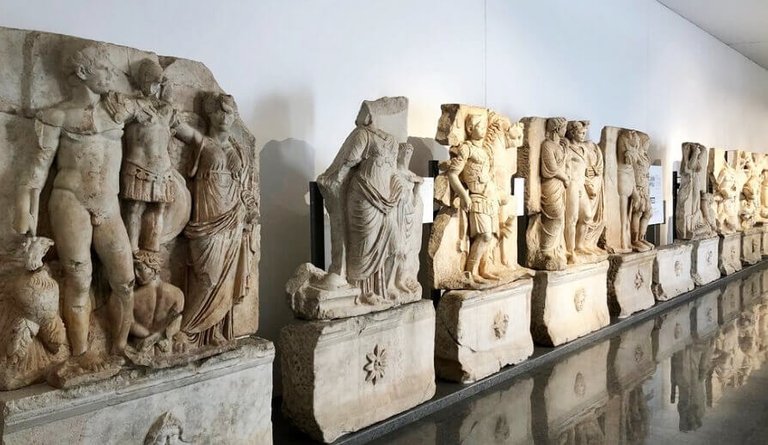
There's an Archaeology museum near the entrance where you can see some exquisite pieces of art, most of which are original sculptures from the Greek and Roman times.
The museum has a massive number (more than 12,000 sculptures according to their official website!!) of neatly organized statues, sculptures, sculpted panels, sarcophagi (stone coffins), and well-decorated friezes. The displays are in great shape, the museum is well lit and the information about each exhibit is comprehensive in both English & Turkish.
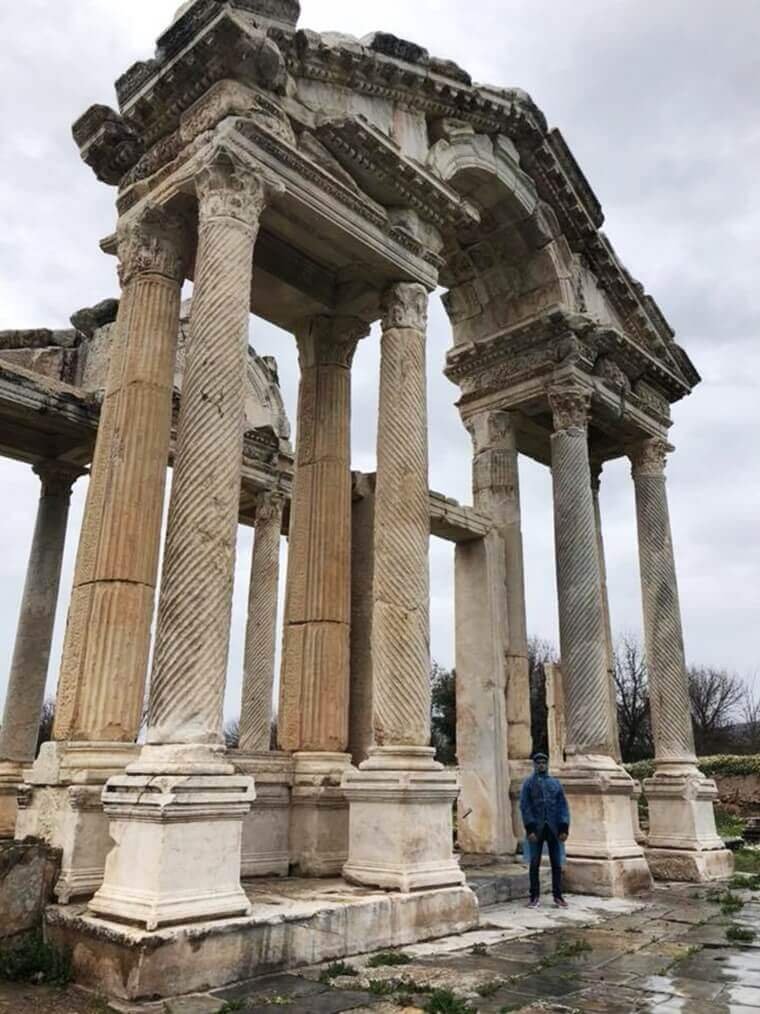
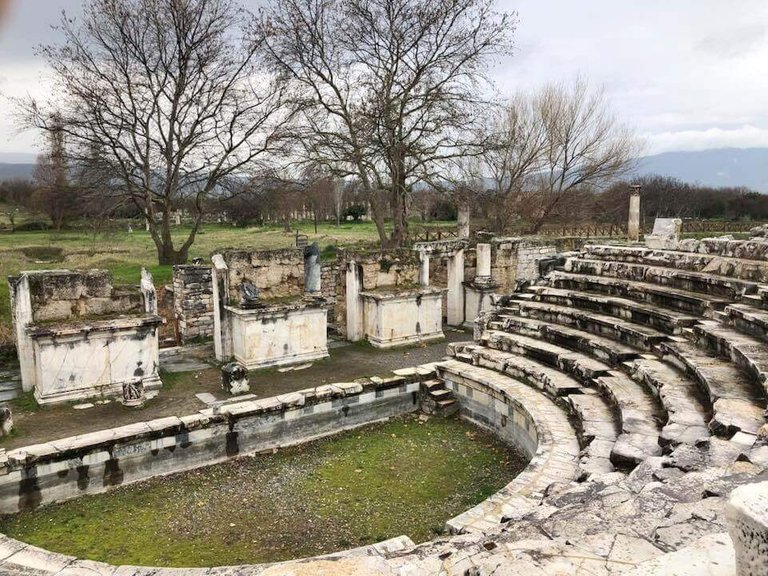
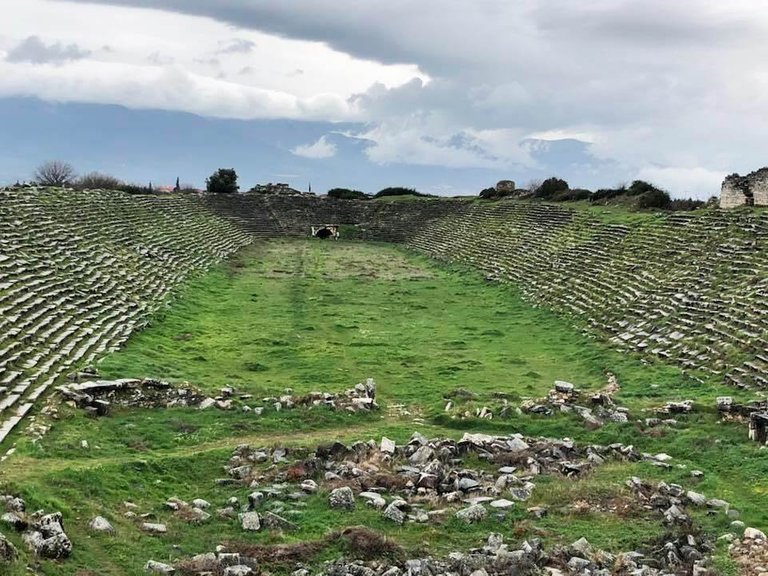
The city is located in the open countryside with a well-marked walkway making sure you cover all the important sights and monuments. The most noteworthy sites are - the Temple of Aphrodite, Monumental gateway, "Bouleuterion" or the City Council building shaped like an amphitheatre & a huge stadium called "Augusteum", dedicated to the emperor Augustus.
An easy 2-3 km walk through the green meadows along the pathway ensures you explore this place thoroughly. Since the place is offbeat and not touristy, there's a high possibility that you'll have the site all to yourself. Do not miss out on a chance to include this absolute gem in your Pamukkale tour itinerary!
7. The House Of Virgin Mary (Meryemana Evi)
I hadn't planned on visiting this place as it wasn't a part of our Pamukkale tour itinerary but since we were on our way to Ephesus, our guide Octavio advised us to experience a bit of Biblical history in the vicinity. And I'm glad we did.
The House of Virgin Mary is located on the Bülbül mountain (Mt. Koressos), 7 km away from Selçuk, Turkey. I particularly enjoyed the drive up the mountain to reach the place as the views around were gorgeous. The entry fee is 35 TL per person. Children under 12 enter for free.
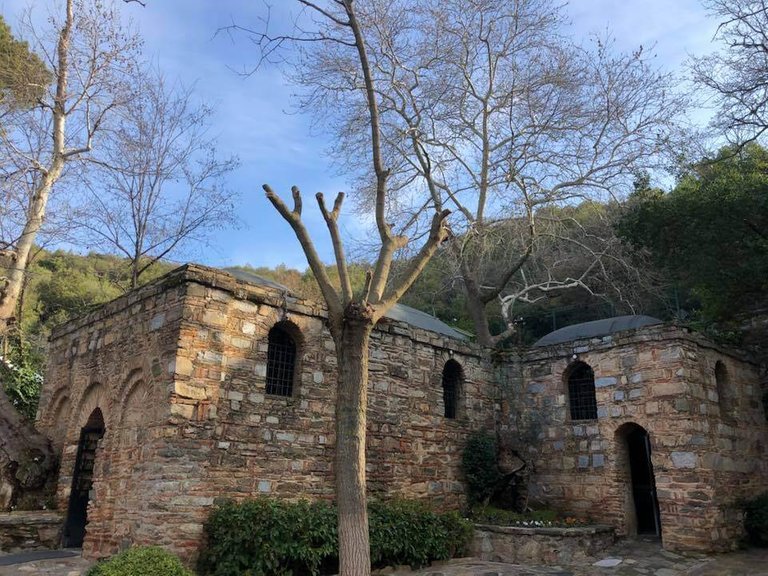
The main site is a beautifully restored stone house/shrine which now acts as a chapel. Octavio told us that Virgin Mary, the mother of Jesus was brought to this stone house by St. John (one of the Apostles of Jesus) and that she spent her last days here till she died at the age of 64.
On entering the chapel, you'll see a large single room where an altar and a statue of the Virgin Mary greet you. There's a smaller room to the right where Virgin Mary is believed to have slept.
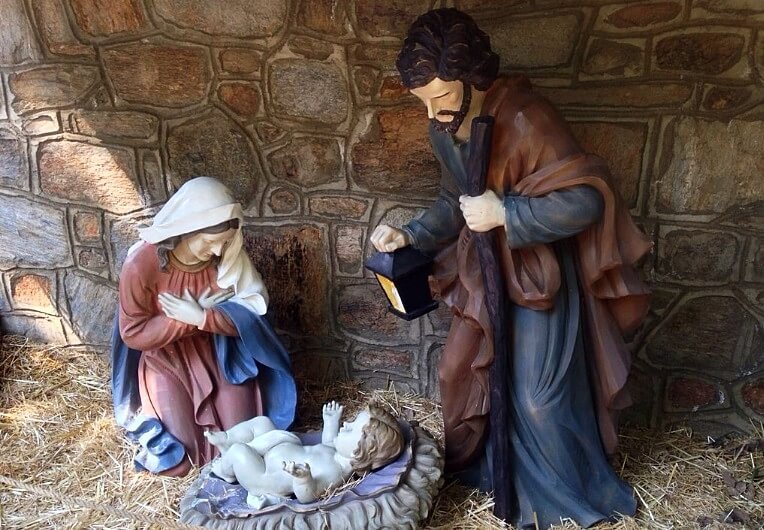
There is an air of tranquillity around the place that awakens your spiritual senses. You'll spot a drinking fountain outside the structure where there are 4 taps serving holy water.
Octavio told us that the 4 taps signified health, wealth, love, and 2nd love. I loved how the place had an adjustable tap in case someone had a breakup/divorce and was looking to get 2nd time lucky in love. Rest assured, I drank the holy water from all 4 taps! (hell yeah!)
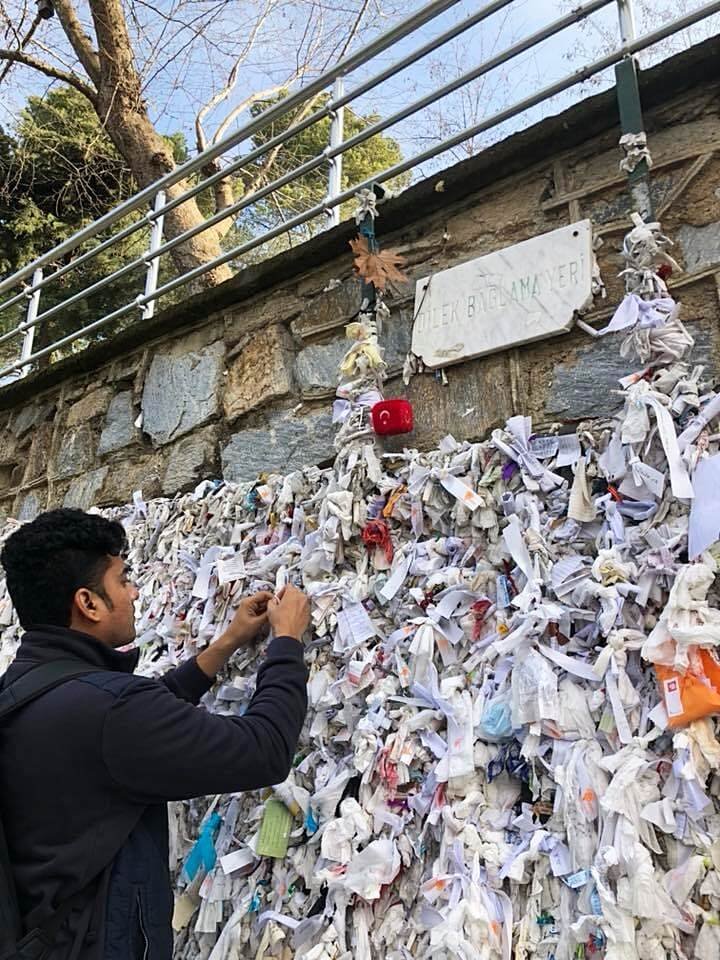
Another attraction at the site was the Wishing Wall. People write their wishes on a paper or fabric and tie it on the wall hoping for their wishes to come true. Religious or not, you'll end up liking the place if your expectations aren't sky-high.
8. Ancient City Of Ephesus
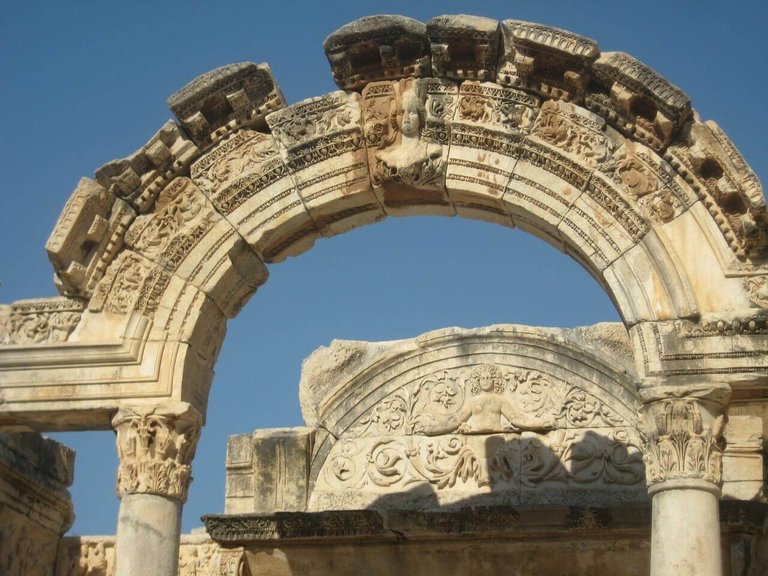
An 8.6 km drive from the House of Virgin Mary takes you to the ancient Greek city of Ephesus which is also my favourite site in the Pamukkale tour. Ephesus was named after the Amazon Queen "Apasas", derived from the word Apis which means bee. Therefore, it's also called the "city of bees".
Located in Selçuk town in the Izmir province of Turkey, Ephesus was built in the 10th century BC by Greek colonists. The city, however, flourished when it came under the Roman empire in 129 BC.
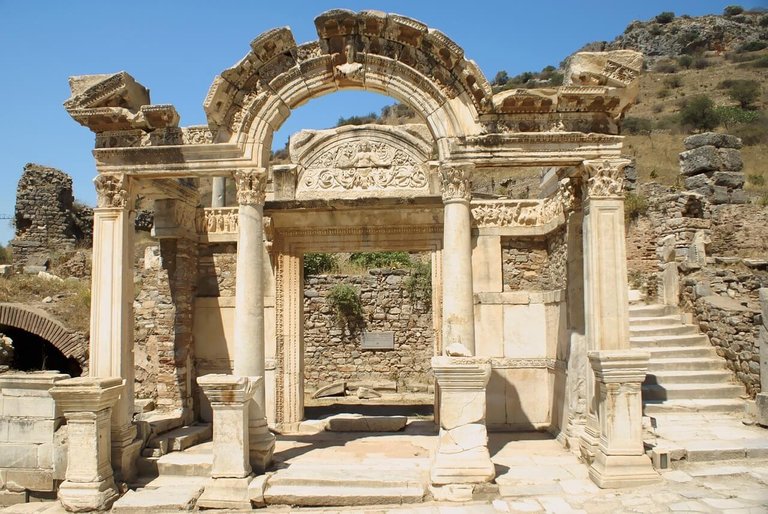
The entrance fee is 60 TL per person which may seem expensive at first but trust me, it's worth the money. You could either do a guided tour like us or get an audio guide for 45 TL. Carry an id proof like a passport to use the audio guide service.
Go there early to avoid large crowds. Start at the top and talk a long walk through the entire city. The marble slab flooring can be a bit uneven at places so mind your step.
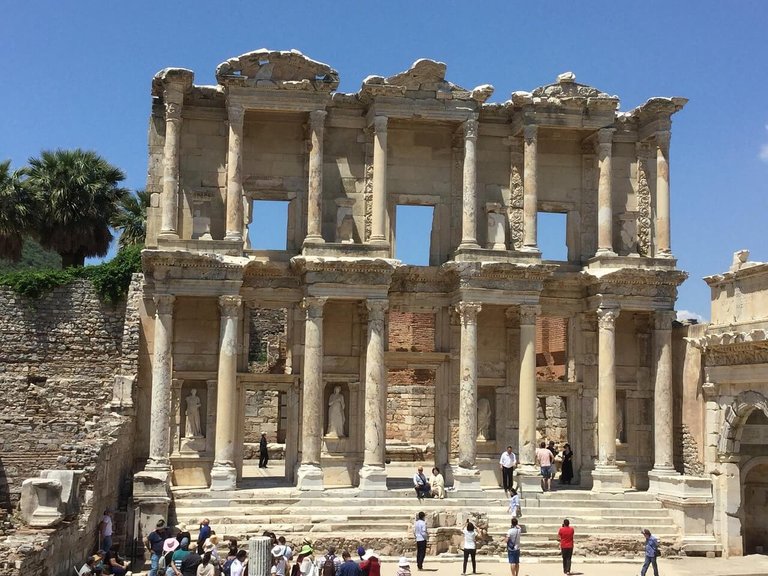
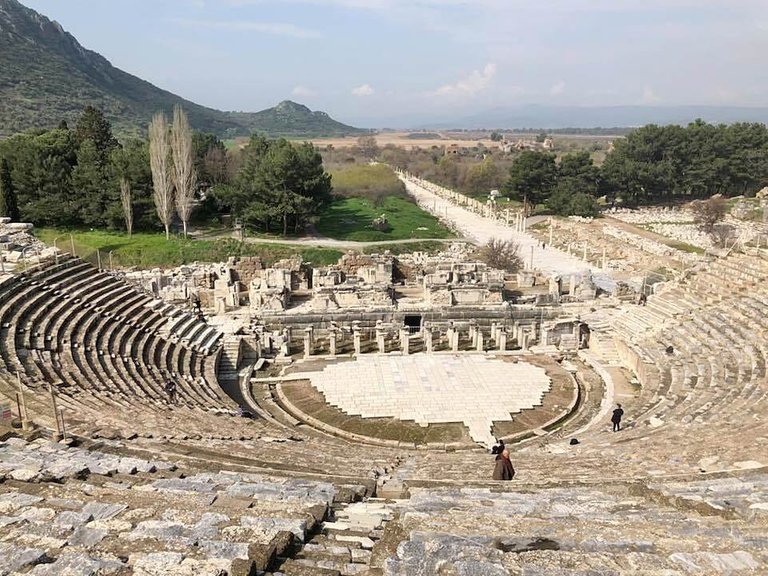
The major attractions at the site are - the Temple of Artemis (which is also one of the 7 wonders of the ancient world), Agoras (open public spaces used as assembly areas or markets), bath complexes, the Library of Celsus (which was once the largest library in the world containing 12,000 handwritten books during it's time), the Great Ephesus Theatre (with an estimated seating capacity of 25,000 people), and the Harbor street (opposite to the theatre) that leads you to the serene mountainous view.
Do visit the Terraced Houses in the ancient city as well. They require an extra ticket which costs 30 TL per person. Here you'll get an idea of the luxurious life that the Romans lived.
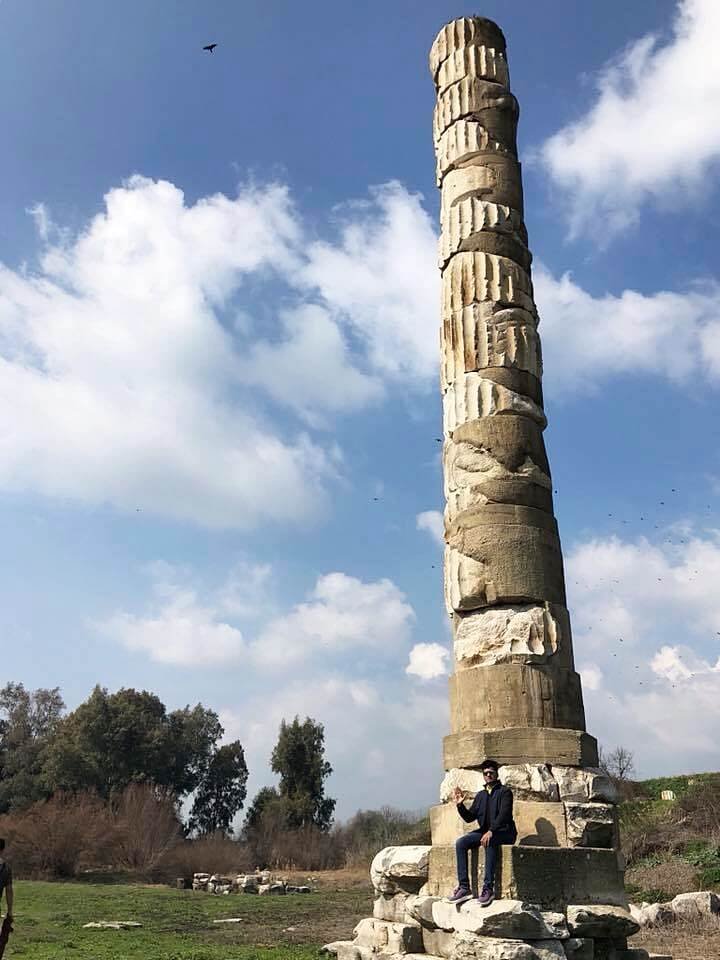
It's not difficult to actually visualize the splendour of the place as you explore it on foot. You will take 2-3 hours to cover this magnificent city in it's entirety. After exploring the ancient city, you can head to the Ephesus Archaeological Museum.
The entry fee for the museum is 15 TL per person. Here, you will see the well-preserved artifacts, statues, sculptures, coinage, pottery that were excavated at the ruins and read about them. To summarise, Ephesus is a surreal world of it's own, and exploring it feels like travelling through time.
TIP - Visit the Basilica of Saint John too if you're not pressed for time. It's a 2-minute walk from the Ephesus Museum and the entry fee is 15 TL per person. It was built by Emperor Justinian to house the Tomb of St. John, the Apostle of Jesus.
9. Isa Bey Mosque
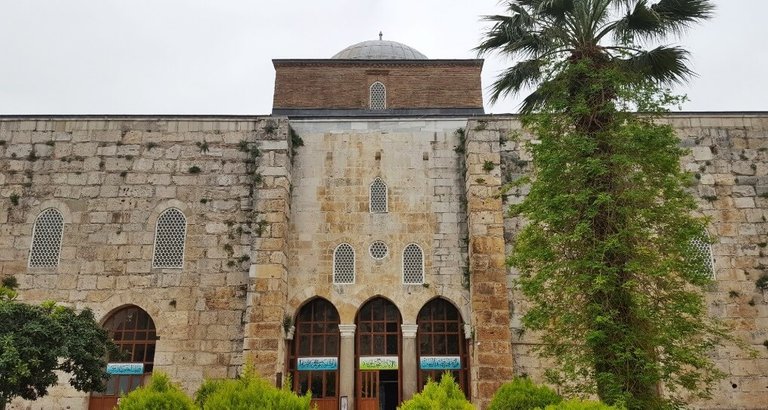
The Isa Bey Mosque (Isa Bey Camii in Turkish) is one of the oldest examples of Seljukian architecture. The mosque was built in 1374-75 and plans of it's construction were based on the Umayyad mosque also known as the "Great Mosque of Damascus". The site is a 5-minute walk (600 metres) from the Ephesus Museum. Entry is free of charge for all visitors.
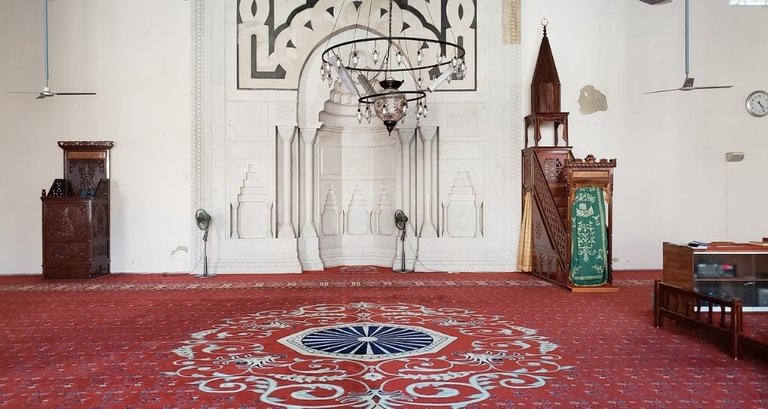
The facades of the mosque are made of cut stone and the fountain garden in it's premises gives it a pleasant appearance. You can see palm and olive trees in the courtyard besides inscriptions and geometric shapes on the walls of the mosque.
The mosque does have columns taken from Ephesus so you can see a wonderful blend of the different cultures. It's a functioning mosque so you need to dress appropriately and be covered up especially the ladies (robe and scarves are available for free at the entrance).

Inside the mosque, there are free books available for tourists to read about Islam and educate themselves.
Outside the mosque, you may come across a former Imam who runs a stall outside the mosque. He is a wonderful gentleman who informs you about the place, shows his pictures as an Imam, and answers any queries you may have regarding the mosque.
Conclusion
Pamukkale has much more to offer than just the cascading travertine terraces and thermal pools. Agreed that the place is becoming touristy by the minute but you have several other spots too which are pristine and worth the inclusion in your Pamukkale tour itinerary.
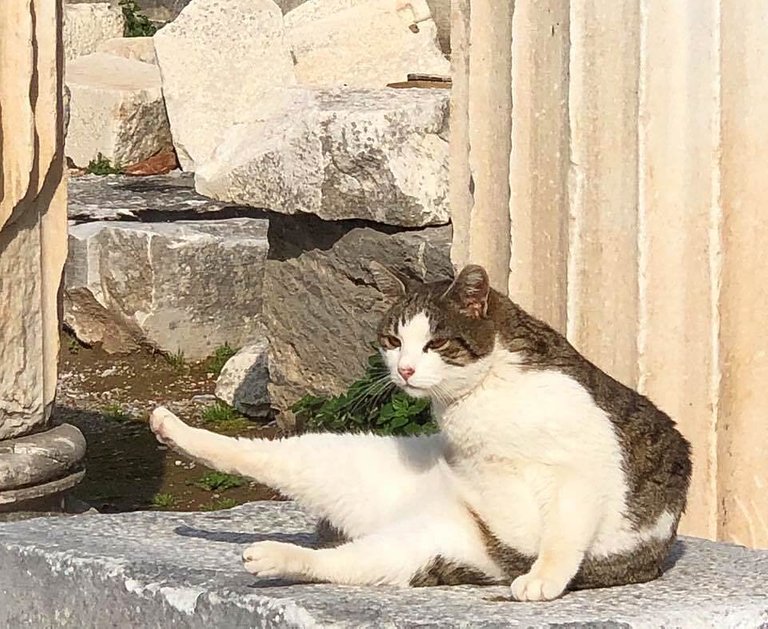
Try visiting the place during April-June or September-October if you want to beat the heat, the crowds, and want to witness cats performing seductive moves at ancient ruins for your cameras!
I hope my list helps you plan your trip to this gem of a place that hides behind the limelight stolen by Istanbul & Cappadocia. It surely is a surreal "cotton castle" city that you do not want to miss out on!
SHARE the post "Pamukkale Tour - Things to do in Pamukkale" on your social media channels with your friends, family, travel partners, spouses and even enemies to help them plan the perfect Turkey trip.
PIN the image below to share the post "Pamukkale Tour - Things to do in Pamukkale" with your followers and save it for future travel planning. Also, SUBSCRIBE to "The Wandering Vegetable" for more such travel inspiration. Şerefe & Happy travelling!
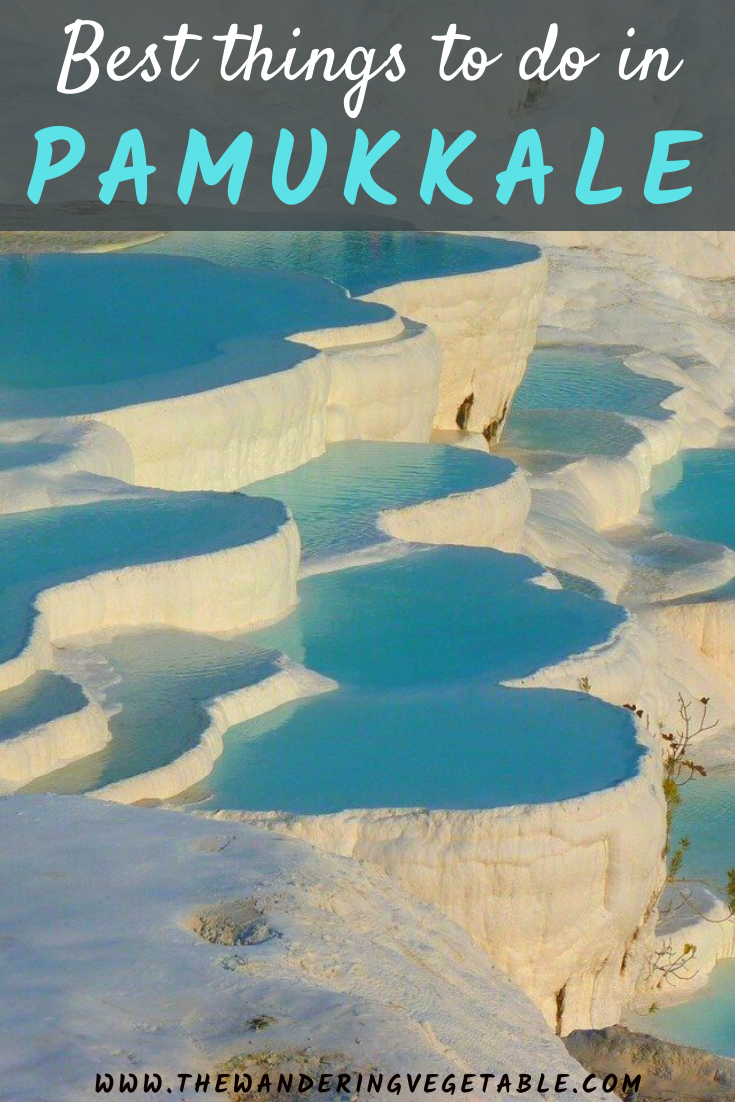
Posted from my blog with SteemPress : https://thewanderingvegetable.com/pamukkale-tour-things-to-do-in-pamukkale/